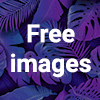
I finally got my first TFCD shoot CD to the client last weekend. The editing wasn't that complicated but it was time-consuming deciding what I would do, why, and how I'd do it. It took me about four hours total to edit 15 pictures... But now that I have the routine down, it should go much faster.
RawShooter Essentials 2006 was indispensible for the editing and it really is designed with workflow in mind. As I get better with it, I realize just how good of a tool it is. I'm so disappointed Adobe has since acquired RSE (and no longer distributes RSE) but there are plenty of copies floating around on the internet which still work (and are legal!).
The hardest part of the editing was getting the color balance correct. I did other editing too (levels, some cloning, some other tweaks) but I spent the most time puzzling over what color a babies skin should be. Without a well-calibrated target (plain white paper reacts too much with UV outside) I had to adjust each image by hand, especially since I was shooting in mixed shade and morning sun. For more on color balance/white balance, see Quick Tip #5.
Hand in hand with this, even if it looks right on my monitor, it may not look right when printed. After all, there's the ambient color of the room (when viewing the monitor and/or the print), the monitor color balance, and the printer calibration. If any of those are off, what I see when I edit the image on the monitor will not be what I see when I view the printed version. Not only that, but the printed version varies a lot by where you are viewing it -- ever get handed a photo in a dark restaurant and then spend two minutes puzzling how to actually see it well in the dim lighting?
As a test, I uploaded two images, this fuchsia shot and a shot of L., to Costco and printed two sets of 4x6s: one set with autocorrecting on, one set with autocorrecting off. The baby shot ended up looking a lot better with autocorrection since the uncorrected version looked too blue and too dark. On the other hand, the fuchsia ended up looking much better without autocorrecting (although it was still a touch dark) since the autocorrecting caused the highlights to blow out. I have to assume the autocorrection is calibrated for skin-tones. For now, I'll be printing all portraits with autocorrection on to avoid mistakes on my end.
In an inexcusable violation of the scientific method, I used luster for the non-corrected and glossy for the corrected shots. I was able to compare the glossy and luster looking at the advertising photos Costco put in (why does Costco throw in two ad prints and a proof sheet into the envelope when you just order one print?). It appears the luster coating caused the images to be slightly darker and lose a little resolution (as might be expected), but it may also be that Costco runs the autocorrect algorithm on their ad prints too.
But, lets say money isn't an object, what is the right process for controlling my color and printing?
- Situate my monitor in a room with carefully controlled ambient.
- Calibrate my monitor with a Spyder2 Express (DPNow review) or a similar device ($60 at Amazon).
- Shoot using custom color balance based on a calibrated target. PhotoMedic gives a good description of how he uses a Balance Smarter ($60 for 12") to set his color balance at the time of the shoot, then he doesn't even need to mess with it later. I've been searching for a cheaper alternative, but haven't found anything yet.
- Download ICC profiles from Costco (or whatever printing shop you use). That link (and this one) also gives a ton of information about how to use them even if you use a different lab.
- Convert the image (which is correctly color balanced for sRGB) to the ICC profile of the given printer. Paint Shop Pro XI cannot do this, but there are stand alone utilities that can (Costco/Dry Creek Photo has a TIFF converter). Photoshop CS2+ can do it also.
- Upload and print with autocorrect off. Make sure to request the printer that corresponds to the ICC profile!
Yeah, I know, that's not what I expected when I went into the editing process. But lets look at the primary problem: no matter how carefully I adjust the color and control the processing from capture to print, once it is printed and framed, I have no control over where and how it will be hung. And when the ambient changes, so does the color balance of the image. Our eyes compensate pretty well, but not if the lighting on the picture is significantly different than the ambient... like a wall that is anything but pure white or gray.
I suppose if I really wanted to get high-end, I could figure out how to color calibrate to different types of ambient then coordinate with my clients to make sure they hang it in the right place. But I'm not nearly high-end enough to do that... yet.
For now, I'll just let Costco correct any color issues, and focus on the more important stuff: pose, expression, technicals, etc.



No comments:
Post a Comment